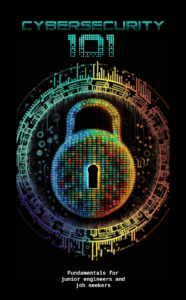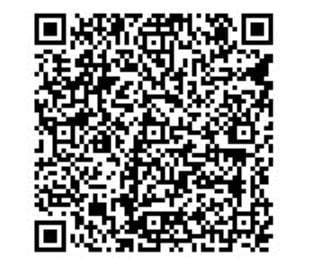Properly training young Cypriot technology professionals is of vital importance, as they are necessary to help protect the digital assets of both public and private organisations on the island, according to Andreas Constantinides, manager of professional services at Nicosia-based firm Odyssey.
To this end, Constantinides has recently authored an illuminating book that serves as a guide and blueprint for young professionals in the cybersecurity space, aiming to help entry-level jobseekers by bridging any gaps in their knowledge.

Constantinides is an Information security specialist with more than twenty years of industry experience with deep knowledge in areas such as security design and implementation, threat identification and analysis, incident investigation and response, as well as security information and event management, among other things.
Throughout his career, he held various technical and also leadership positions, including a decade-long tenure as manager of the security operations centre (SOC) and managed security services (MSS) departments.
In his current role, he serves as the manager of professional services, responsible for providing top-notch security solutions and services to clients.
Furthermore, Constantinides holds a number of professional certifications such as CISSP, CISA, and CEH. He is also a qualified PCI-DSS QSA auditor.
What motivated you to write CyberSecurity 101 specifically for junior cybersecurity engineers and job seekers?
Writing “CyberSecurity 101: Fundamentals for Junior Engineers and Job Seekers” was driven by several key motivations.
Firstly, I noticed a significant knowledge gap in the cybersecurity industry when it comes to providing comprehensive and beginner-friendly resources for those just starting their careers in this field.
Many existing materials were either too technical or assumed a certain level of expertise, which could be overwhelming for newcomers.
My goal was to bridge this gap and create a resource that could serve as a solid foundation for aspiring cybersecurity professionals.
By targeting junior engineers and job seekers, I aimed to provide them with practical and easily understandable insights into the fundamental concepts of cybersecurity.
The guide covers essential topics, ranging from basic principles and best practices to practical tips on how to navigate the job interview process successfully.
Additionally, having been in the cybersecurity industry for a considerable time, I realised the importance of nurturing and empowering the next generation of professionals and I’ve been involved for many years in onboarding newcomers into various technical or consultancy positions with trainings and labs.
Cybersecurity is an ever-evolving field, and we need talented and passionate individuals to help protect digital assets and combat emerging threats effectively.
Lastly, I strongly believe in the power of education and knowledge sharing. By offering this resource, I hope to contribute to the growth of the cybersecurity community and help junior engineers and cybersecurity experts in general to build a strong foundation for their careers.
Ultimately, my motivation behind writing CyberSecurity 101 was to make a positive impact on the cybersecurity landscape by empowering and supporting those who are just starting their journey in this exciting and important field.
Can you tell us more about the gap you identified in the industry where many candidates lack basic knowledge and understanding of cybersecurity, and how this book aims to address that gap?
In my experience and research within the cybersecurity industry, I observed a notable gap in the knowledge and understanding of cybersecurity fundamentals among many candidates, especially those who are just starting their careers or seeking opportunities in this field. This gap often stems from the complexity and fast-paced nature of the cybersecurity landscape, which can be overwhelming for newcomers. Additionally, many existing resources tend to assume a certain level of expertise, leaving aspiring cybersecurity professionals struggling to find a comprehensive and accessible starting point.
The identified gap can manifest in several ways. These include the ack of foundational knowledge, where many candidates lack a solid understanding of the basic principles and core concepts that underpin cybersecurity. This includes fundamental topics such as network security, encryption, malware detection, access controls, and risk management.
Another issue is limited practical guidance. While theoretical knowledge is essential, candidates also require practical guidance on how to apply cybersecurity principles in real-world scenarios. This includes hands-on exercises, case studies, and best practices that help bridge the gap between theory and application.
To address this gap, “CyberSecurity 101” was specifically designed to offer a comprehensive and beginner-friendly resource for aspiring cybersecurity professionals. Each concept is explained in clear and concise language, avoiding unnecessary technical jargon, and making it accessible to readers with various levels of technical expertise.
Moreover, the book goes beyond theory by also instructing readers to create relevant labs to test their knowledge and become better engineers. This approach helps candidates gain confidence in their abilities and prepares them for the challenges they may encounter during a job interview but also in the field.

Could you provide some examples of the fundamental knowledge and concepts covered in the book that are crucial for job seekers in the cybersecurity field?
Some examples of the fundamental knowledge and concepts covered in the book are, the Understanding of the CIA Triad (Confidentiality, Integrity, Availability) and its significance in information security, an overview of cybersecurity frameworks and best practices, such as the NIST Cybersecurity Framework and ISO/IEC 27001, introduction to security policies, procedures, and governance.
Also, Networking Knowledge, which includes TCP/IP fundamentals and how data flows through networks, common network protocols and their vulnerabilities (e.g., HTTP, FTP, DNS), and Network security principles, including firewalls, VPNs, and intrusion detection/prevention systems.
Operating Systems, specifically Linux, Threats and Attacks, Explanation of common attack vectors and techniques used by cybercriminals. The importance of vulnerability assessment and penetration testing, Incident Response and Handling, Compliance and Regulations and many more.
These topics represent a subset of the comprehensive knowledge and concepts covered in “CyberSecurity 101.” By delving into these areas, the book equips job seekers in the cybersecurity field with a strong foundational understanding, making them better prepared to tackle challenges and be successful in their cybersecurity careers.
How can this book assist companies in providing a solid foundation of knowledge to newly hired employees and help them get started in their roles more efficiently?
Many companies create a tailored training path for the candidate with the hope that they will enjoy the journey, develop a passion for cybersecurity, and become proficient engineers and cybersecurity experts who contribute to the company and increase productivity.
In some cases, the provided training includes even basic cybersecurity concepts, networking, techniques, technologies, methodologies, threats, attacks, vulnerabilities, tools, and more.
While some candidates may only require a quick refresher if they have received prior education in these areas, many others need to learn from scratch.
The training sessions can be time-consuming, take away from productive work, and need to be repeated for new hires.
So for companies, this book can serve as a valuable guide to provide to newly hired employees, helping them get started in their roles with a solid foundation of knowledge.
How to get the book:
The book is available for purchase in both paperback and digital Kindle formats on Amazon.
Additionally, for customers in Cyprus, it can be found at Parga bookstores.
If you wish to access the book on Amazon, you can conveniently do so by scanning the provided QR code:








Click here to change your cookie preferences